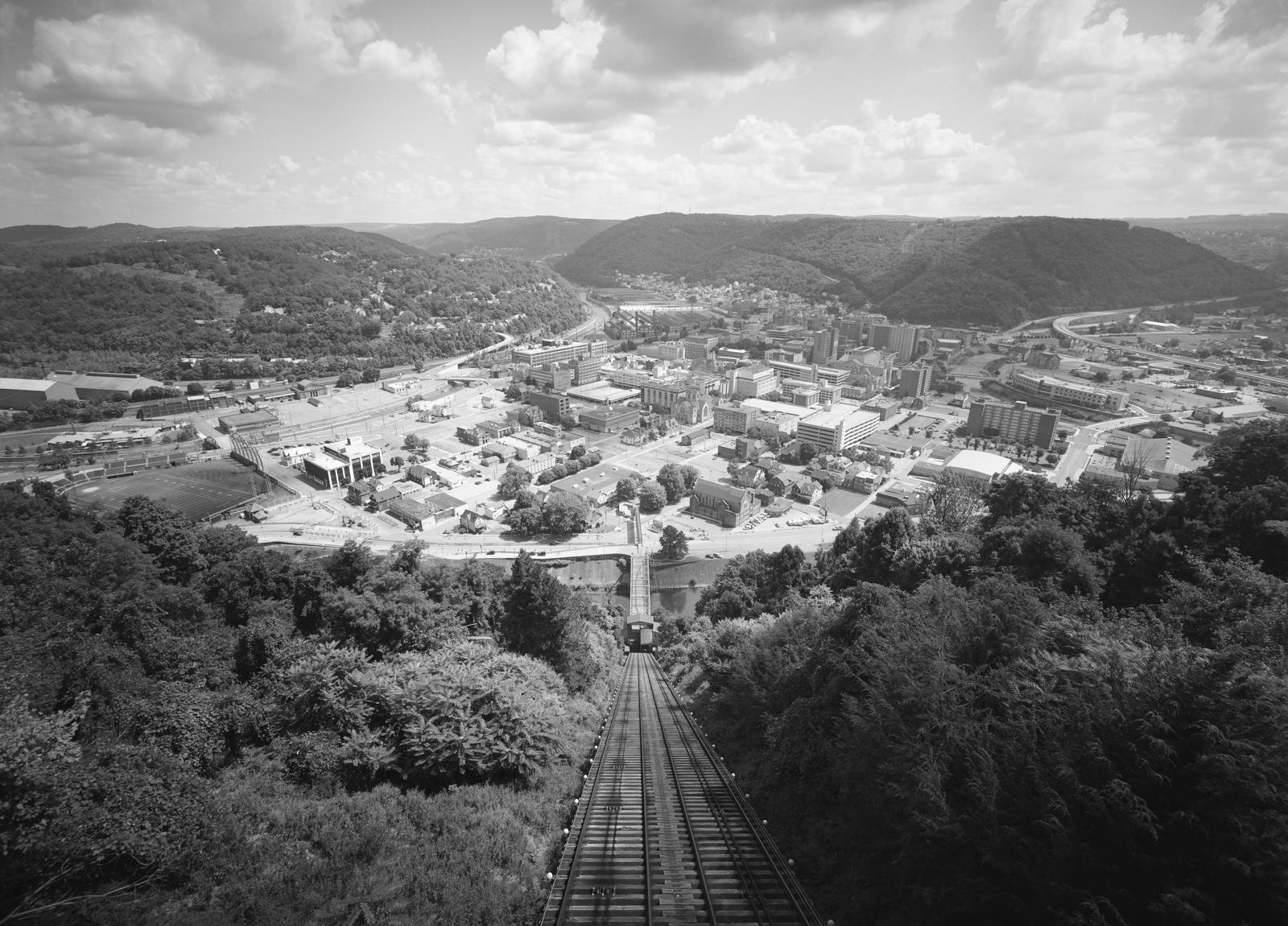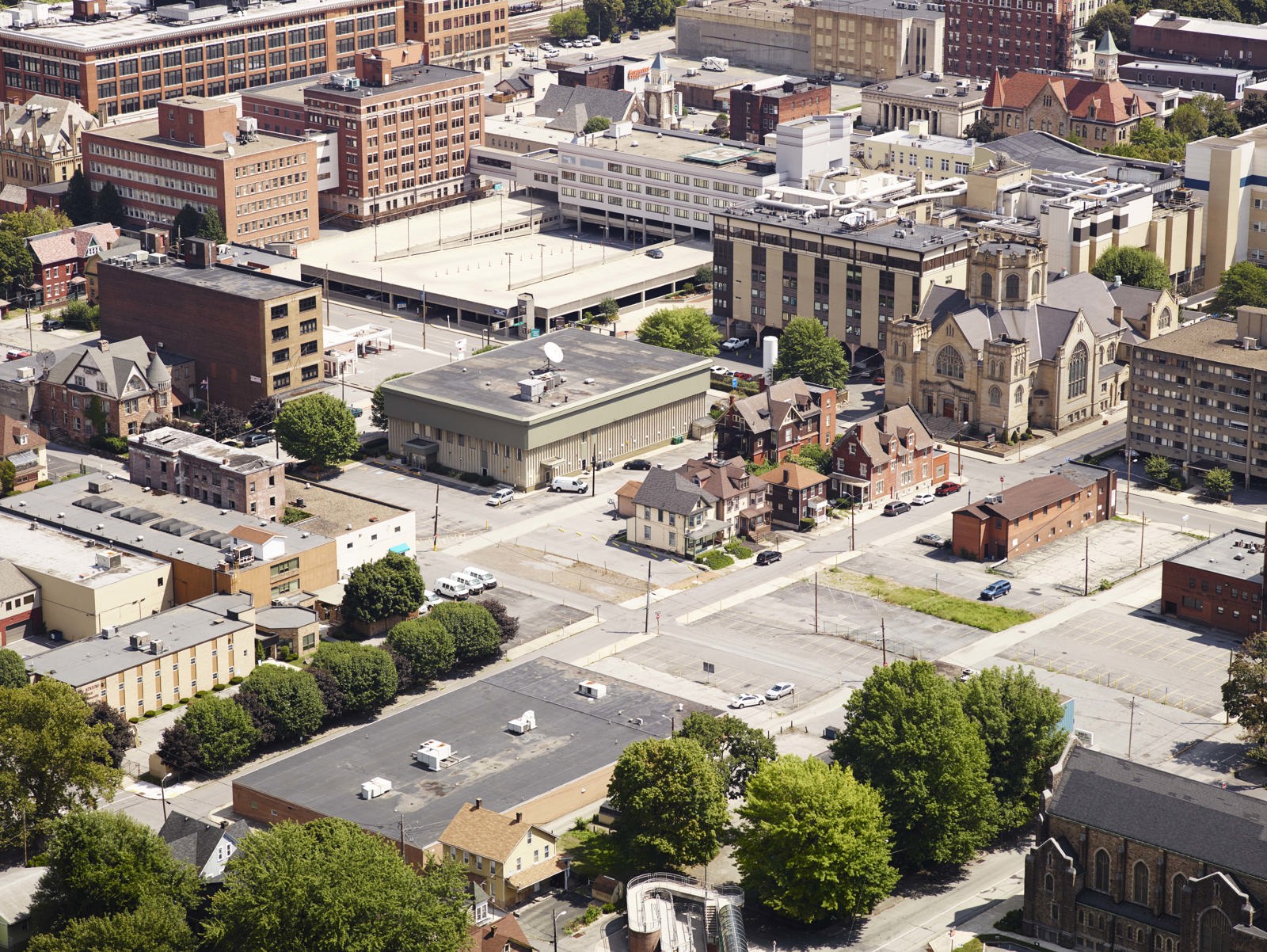
Johnstown is shaped like a heart in a landscape with mountains on all sides and a river that divides the city in two. Its industry emerged from the mines in the surrounding mountains. Describing Johnstown is like describing Kongsberg.
-
Text:PETTER KARL AANONSEN
Photo:Photo: EINAR ASLAKSEN
-
Ove Ronny HaraldsenGroup Communication Manager
Perhaps it not that strange that many people have pointed out that Johnstown has many similarities to Kongsberg. Even the weather can be alarmingly similar. Johnstown is not a big city and lies well protected, deep inside Pennsylvania. The city is best known for having been hit by three terrible floods during its history that claimed many lives. The floods lie like visible scars on an otherwise charming industrial city. But when you stand atop the mountain and gaze out over the city you get a real impression of the painful events that will always be part of the city.

Large areas of Johnstown are covered by what was a pulsating and extremely important industry in the development of America. Enormous halls that used to house iron and steel production today lie dormant. Being in an industrial district that is so huge and yet so quiet is very strange. The only sounds to be heard are birds singing and grasshoppers rasping. These are interrupted only by a goods train hammering through the city like a memory of what once was. Johnstown used to be a major producer of railway track. The emergence of iron production in Johnstown made America independent of steel imports from England.
UP ON THE MOUNTAIN
If you leave the centre and ascend one of the many mountains, namely Richland, you really do arrive at Kongsberg - Kongsberg Protech Systems USA. In-between Lockheed Martin’s many buildings lies 210
Industrial Park Road. This is Kongsberg Protech System’s largest facility outside Kongsberg Technology Park. With almost 200 employees, the former underwear factory has been converted to one of the most modern units in the whole of KONGSBERG. The PROTECTOR Remote Weapon Station (RWS) weapon control system is produced here for the American market. The system makes it possible to control the weapon from inside a vehicle or from another protected position.

Every time you enter the heart of production it is like stepping into a film. As you round the corner and see the production hall, you feel as if everything has stopped for a microsecond. The light automatically makes you squint. Your eyes dance through the premises - back and forth, up and down. It is so white, so clean, and so stylish. And pleasant. Everyone says hello and smiles while you move through the premises from new production, testing, and cable production to repairs and maintenance.
BILL IN THE CAGE
After a tour of the premises we met Bill Houser. He was sitting behind a desk in the corner of what must be KONGSBERG’s largest office. But then he does need space for a lot of things in his office. “Nothing leaves this room without the approval of the American authorities,” smiles a wily Bill. He has crates full of equipment that are just sitting there waiting to be collected. All the equipment in here is actually the property of the American military. Weapon stations that have returned from service and require repair or maintenance.
We move on into a jungle of crates. Stacks and stacks of them, and end up in a RWS shower! Here, every station that is returned is flushed and washed down after everything in the crate has been carefully recorded. “We have washed off a lot of desert sand here,” says David Sponsky.

He and his colleague Mitchell Hill together wash, brush and record the items that are forwarded for repair and maintenance. The room has its own odour. It is not soap, it is more the smell of damp cardboard. When you look at the crates with weapon stations everywhere you see clear signs of water and damp on them. “Everything you see around here are stations that have been returned from service. They have stood out in the rain and are full of sand and dirt. You never know what is hiding in the crate,” says Mitchell. We leave the wash hall and return to the factory premises. Here we meet David Zucco.
CAME IN AS NUMBER TWO
David accompanies us onwards. We take a seat in the canteen and are served “Norwegian brewed coffee”. Apparently it is stronger than normal American coffee.“The Norwegians just complain that our coffee is too weak,” interjects a colleague while the polystyrene cups are filled.David has been here since the start of the Johnstown adventure.“I was tipped off about the job by my colleague Vickie Daniels. I knew nothing about KONGSBERG before the interview,” chuckles David. “It has been an amazing journey.”
David is from Johnstown. Like many of the others we meet, he has roots going back to the steel industry. “My grandfather came from Italy and was sent by train to Johnstown with a sign hanging around his neck.” David explains that many people arrived in Johnstown in this way. A sign was hung around your neck when you arrived in America and you were put on a train to a specific destination. Many people arrived in Johnstown from Southern and Eastern Europe with a clear goal of getting work in the ironworks. “The mentality of the entire is district is based on hard work. It is something I really notice here,” says David Zucco.
JUST A BEGINNING
We leave the factory to take a closer look at the city of Johnstown. We are struck by the peace and quiet. Johnstown’s population of 20,000 means it is not a large city. The city is far from hypermodern, just peaceful and quiet. On our stroll we can still see visible scars from the horrible encroachments on the part of nature. On the wall of City Hall there are three marks that indicate the high water mark of each major flood. It is obvious that buildings are missing from the surrounding blocks. Buildings that were never rebuilt. But, just like KONGSBERG has survived for 200 years, Johnstown has also endured. After going through tough times with an iron industry that has almost disappeared, Johnstown re-emerged and a new era has started. David Zucco summed it up neatly when we talked about KONGSBERG and the company’s 200th anniversary.
“I feel it is just the start of something big. May be not just for KONGSBERG, but also for Johnstown.”


